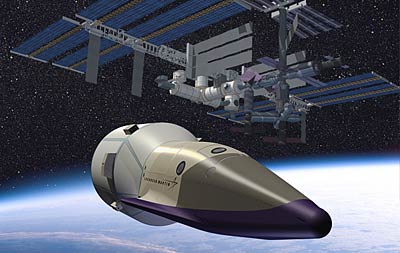Guns and butterby Anthony Young
|
| Perhaps no other agency is so “out there” in terms of its visibility as NASA. Have you ever heard of the successes or failures of the Agriculture Department, the Labor Department, or the Education Department? |
Nothing makes NASA’s real funding needs more glaring than the greatly anticipated report by the President’s Commission on Moon, Mars, and Beyond. This report will act as the blueprint for funding NASA’s new responsibilities and exploration goals. When the President made his announcement in January on the bold new vision for America to embrace regarding space, it was stated then and subsequently that all of the goals could be accomplished by basically shuffling money around. This “robbing Peter to pay Paul” approach to program funding is not realistic. There must be dedicated funding—new monies—for these new specific programs, not funds siphoned off from other cancelled programs. Certainly those within NASA sitting on existing budgets for their own programs will fight tooth and nail to preserve them.
With the loss of the shuttle Columbia and its crew, America suddenly stood naked with regard to manned access to space. We hear over and over that America is the world’s only remaining superpower. If that is true, then how is it America is incapable of putting its own astronauts into low Earth orbit while the Russians and Chinese can do so with no problem? This superpower is reduced to relying on the Russians to get crews to and from the ISS. This fact alone drives home the point that the Crew Exploration Vehicle and integration with its booster must be a top priority for NASA and it must receive dedicated funding to be successfully accomplished. The CEV is just one of several key engineering programs America must pursue if it is to regain its preeminence in manned—excuse me—human spaceflight.
Critics argue tight reins must be placed on NASA’s funding or it will race out of control. They cite the incessant re-engineering of the ISS—the cost overruns and seemingly endless delays before a single spar was ever placed into orbit—as how not to run a macro-engineering project of that scope. They certainly have a point there. Part of the problem may have lay in the fact that it was international, but that is the subject of another commentary. There is perhaps no better book published on how NASA was able to accomplish what it did during the Apollo program than Managing NASA In The Apollo Era (SP-4102) written by Arnold S. Levine. This book still in print and available from the Government Printing Office and NASA itself, and it is also available online. It would be worthwhile to revisit the management of Apollo and apply the lessons learned to efficiently manage NASA’s macro-engineering projects of the future.
Proper management alone, however, will not spell the success of Project Constellation and related programs. NASA must not be forced to go hat-in-hand to get the funds it needs to launch these essential programs. The President must be an advocate of project-dedicated funding and Congress must be willing to step up to the plate to ensure NASA has the funds to do the job. Certainly, Congress had little hesitation when the 80-plus billion dollars was called for to conduct the war in Iraq. In fact, funds are always found for programs deemed essential. America cannot and must not be second place in human space exploration.
President John F. Kennedy certainly laid it out clearly enough during his “Urgent National Needs” speech before a joint session of Congress on May 25, 1961. President George Bush needs to do the same. To borrow just one line from Kennedy’s speech that is most applicable today: “ ╔while we cannot guarantee that we shall one day be first, we can guarantee that any failure to make this effort will find us last.”
